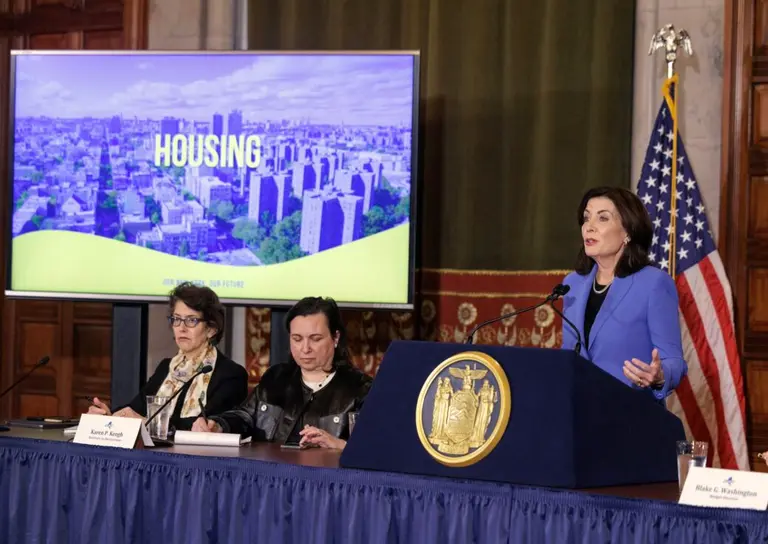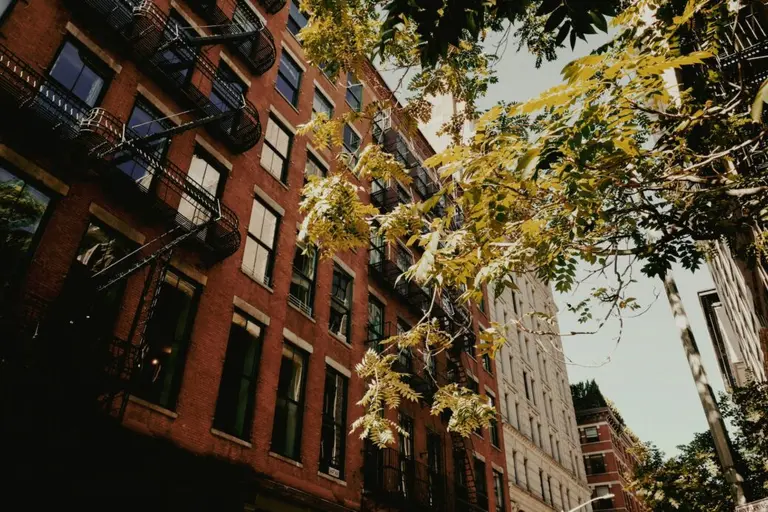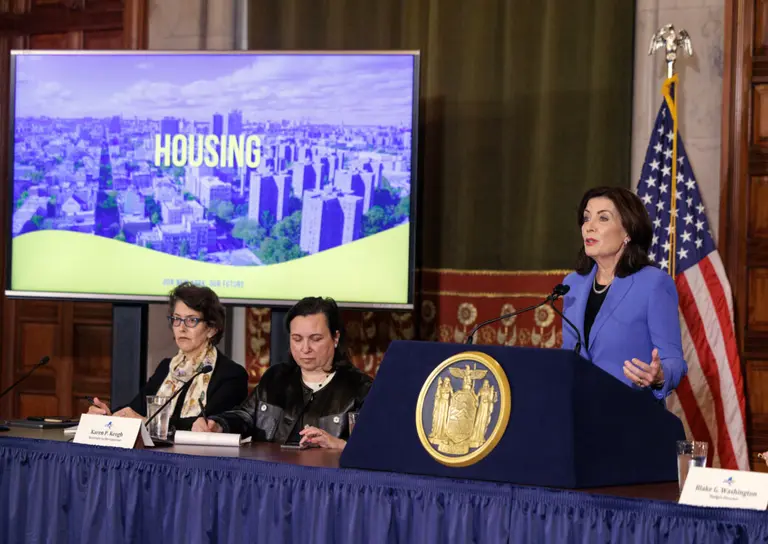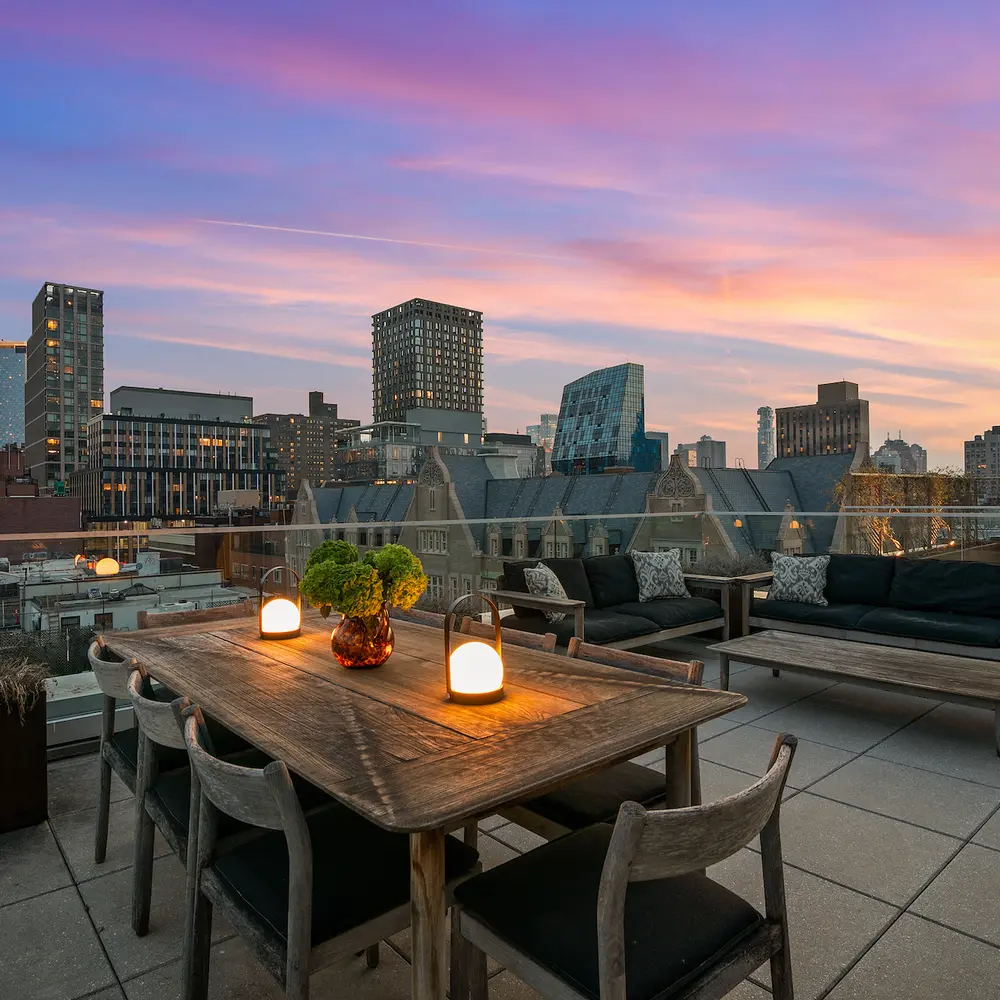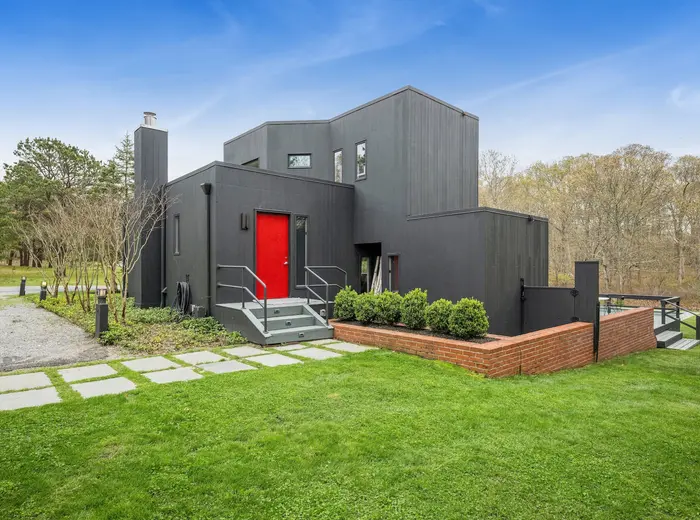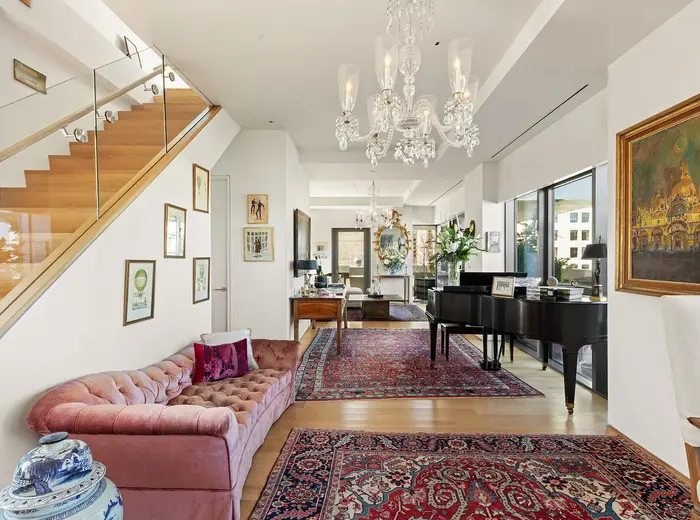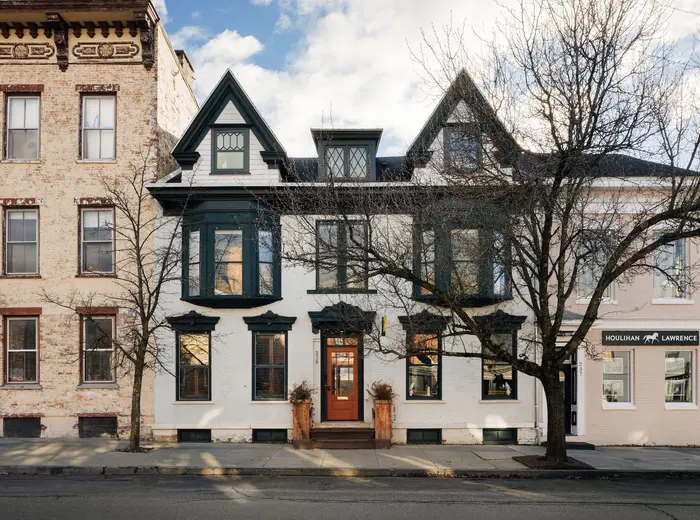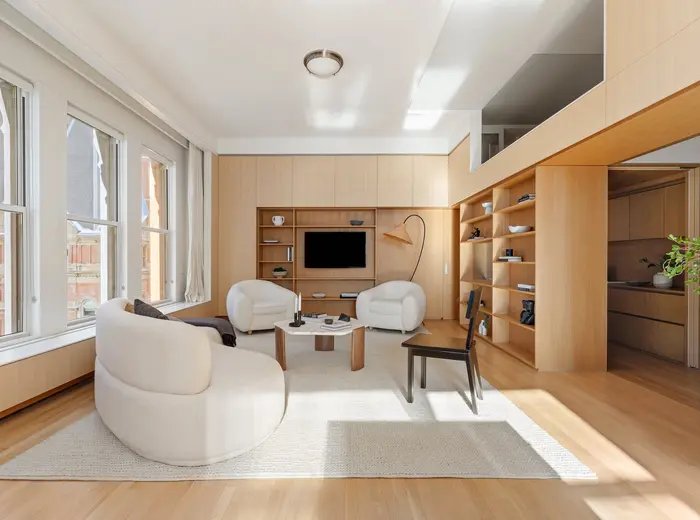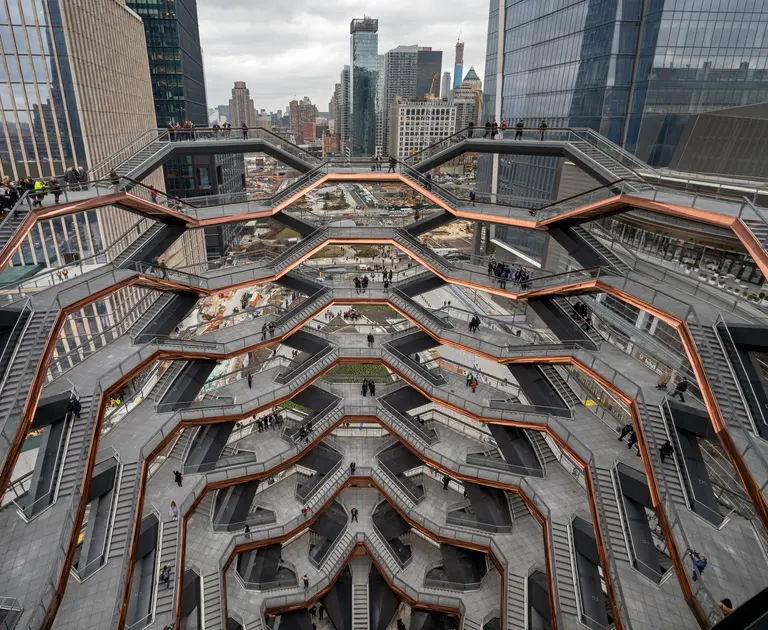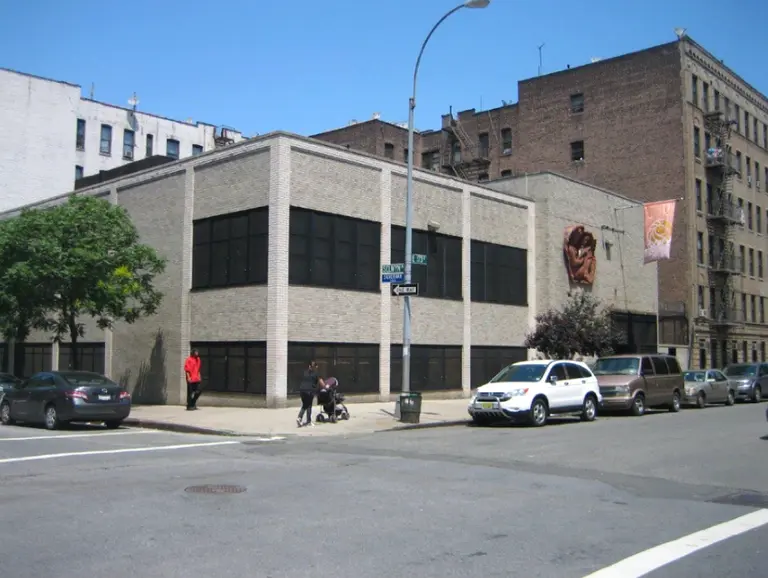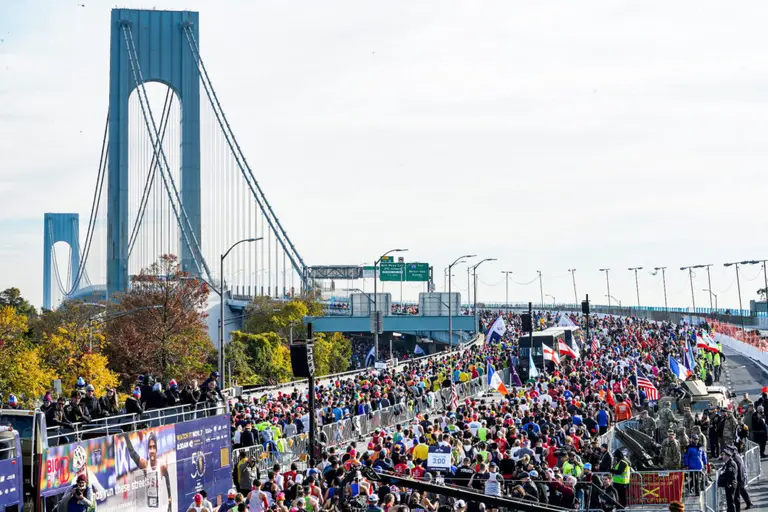With a higher cost and shorter route, de Blasio’s BQX streetcar plan is back on the table
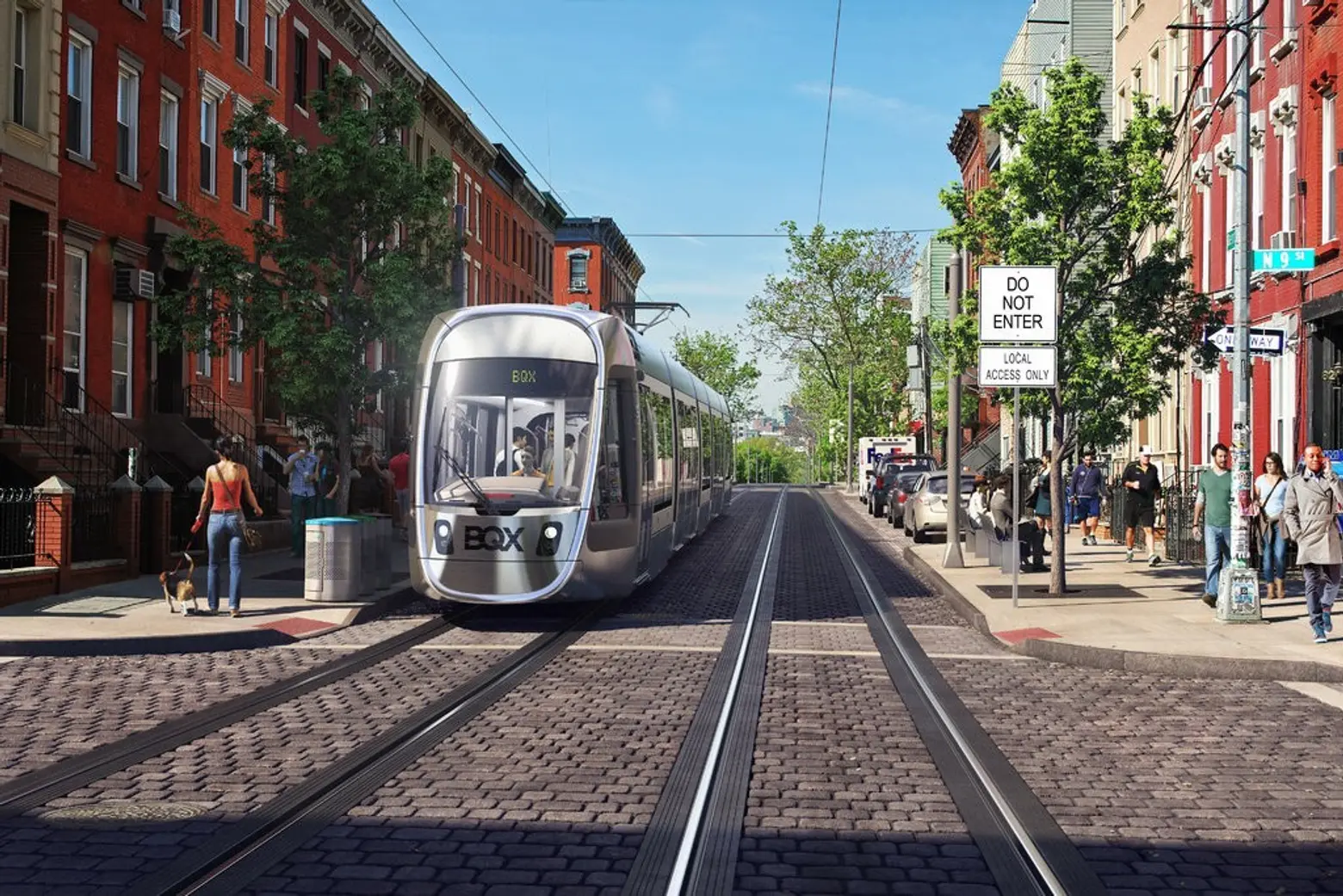
Rendering via NYCEDC
The long-delayed plan to bring a light-rail trolley between Brooklyn and Queens has been revived, following the completion of a two-year feasibility study, Mayor Bill de Blasio announced on Thursday. But the proposal differs from the original idea for the Brooklyn Queens Connector (BQX) the mayor had first released in 2016. The cost of the revised project has jumped to $2.7 billion from $2.5 billion, the number of miles on the route has dropped from 16 miles to 11 miles and the city expects the cars to run by 2029, instead of the original projection of 2024.
“The Brooklyn-Queens waterfront has experienced incredible growth. Now it’s time for our transit system to catch up,” de Blasio said in a statement. “The BQX is one of the biggest, most ambitious projects in a generation. It will be a challenge, but New York City is taking it on.”
De Blasio originally said the project would pay for itself with tax revenue from high real estate values stemming from the new streetcar. The new plan says this process, known as “value capture,” could only provide about $1.4 billion. To cover the gap in funding, the city is seeking $1 billion from the federal government.
The city has also shortened the route by removing stations in Sunset Park. The report says the city decided to not extend the BQX to that neighborhood because of a “combination of low projected ridership and high estimated costs of construction.” The city estimated just 2,000 people would take the streetcar from the five proposed stations in Sunset Park. It was estimated to cost $500 million to construct the five stations.
According to the city, the streetcar will generate $30 billion in economic impact. For the first year, ridership is projected to be about 50,000 per day. Jessica Schumer, the executive director of Friends of the BQX, called the study a “huge win for New Yorkers who have been cut off from transit for too long.”
“With the city embroiled in a transit crisis, the BQX will serve as an innovative model for how to build new mass transit sustainably and equitably, while creating new, good paying jobs along the way and making access to those jobs easier,” Schumer said in a statement. “We look forward to the next steps and continuing our work within communities to build on the widespread support for this exciting project.”
The city will begin an environmental impact study process this winter, followed by a Uniform Land Use Review Procedure (ULURP) in 2020. Construction is expected to begin in 2024. Read the full study here.
RELATED:

